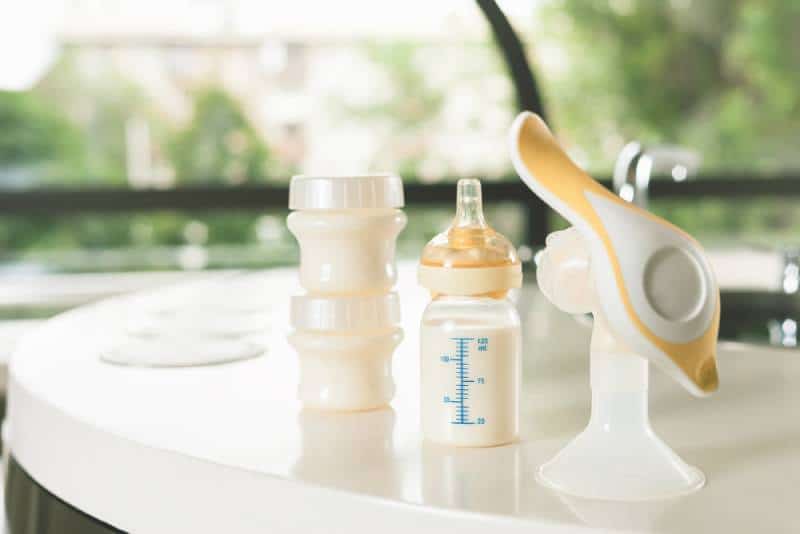Weaning from pumping is no easy feat. Many a mom has probably gotten used to using her breast pump on a daily basis to help build up a proper stash of breast milk for her baby while she isn’t around to breastfeed him.
But, as the child grows older, he starts feeding less and less as solid foods become more of a priority, so there’s no need to pump as often. It’s time to wean from pumping.
The real question here is: How to stop pumping?
I’ll tell you right now that it takes a certain amount of time to separate yourself from pumping, but, if you feel like you’re able, you can also do it immediately. There is no need to rush as it can be a delicate process and each mom adapts differently to it, so take all the time that you need.
At this point, your breast pump has probably become your b(r)e(a)st friend (a bit cheesy, I know) and has helped you get back to a more normal lifestyle by enabling you to return to work.
In the odd case, you even manage to pause your mothering duties and relay them to your marriage partner or a babysitter as you go out without having to worry if your child has enough milk.
But now, it’s time to say goodbye to one of your best compatriots in your early motherhood as you won’t be needing it for much longer, if at all.
Whether you sell your pump or keep it in case you plan on expanding your family some more, that’s up to you.
There are 4 different methods that you can do to wean yourself from pumping:
1. Stopping Pumping Cold Turkey
2. Slowly Reducing The Number Of Sessions Per Day
3. Decreasing The Duration Of Your Pumping Sessions
4. Spreading The Remaining Sessions Further Apart
1. Stopping Pumping Cold Turkey
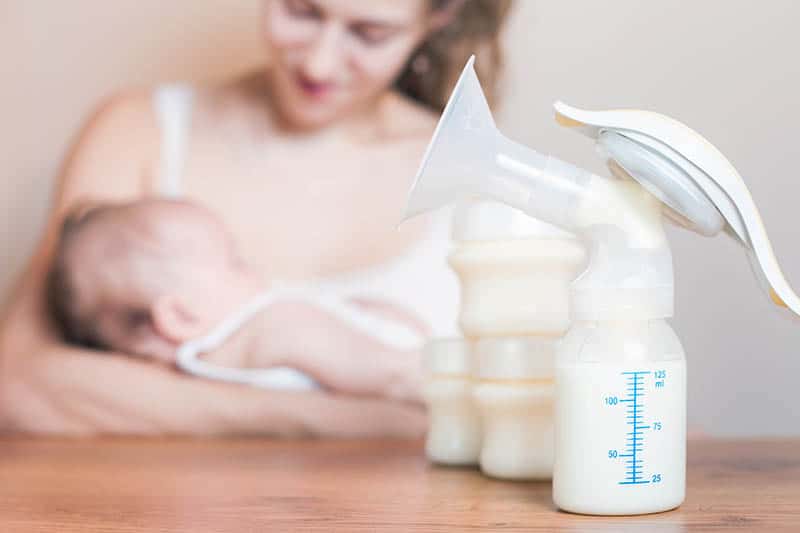
While all of these methods are effective in their own right, I would personally suggest refraining from doing it cold turkey.
While stopping your pumping sessions all at once can be a quick solution that doesn’t waste much time, it’s like ripping off a bandage in a sense that you might feel the sting.
The sting in this case is a big risk of suffering breast engorgement and mastitis from clogged milk ducts because you haven’t allowed your milk flow to reduce itself over time.
This can be a cause of great pain for you for a good period of time because you allowed the milk ducts to get inflamed due to the abrupt stop you put on pumping.
This is why we do the other three methods more often than not.
2. Slowly Reducing The Number Of Sessions Per Day
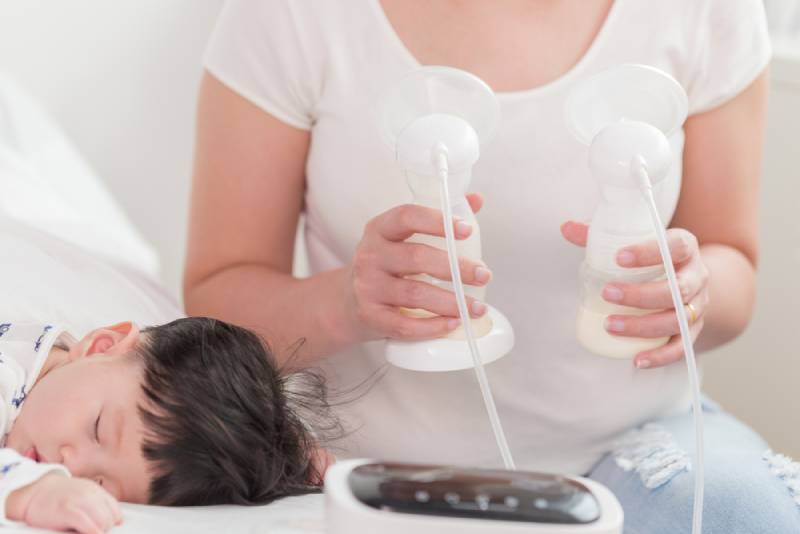
If you start to slowly reduce the number of pumping sessions per day, you’ll be able to avoid an overabundant milk supply from causing the issues mentioned prior.
This is because our breasts adapt based on the amount of milk that is suckled.
If our milk ducts are constantly being emptied, our brain signals them to produce more, but if we reduce the number of sessions, that signal keeps being sent out less and less, letting us slowly wean off pumping.
Reducing by one session each week will allow your body to slowly adjust to the changes and gradually decrease your breast milk supply, allowing you to finish your weaning from pumping in a more paced fashion – one that has a lot less chance of ending up with complications and breast soreness.
The best first session to cut out is the one you do the furthest along in the day, the evening one.
Why that one in particular? Because of the way milk production works.
It’s not always the same throughout the day. It starts off strong in the morning and then tapers off as you go further into it, becoming weakest in the evenings.
It being the weakest at night is the reason why it’s best to target that one first.
You want to wean off smaller sessions first, which will, in turn, weaken the others. In that way, you then repeat the process until done (always going after the weakest link, in a sense.)
On top of reducing the number of sessions, decreasing the duration of your pumping sessions can be a very effective follow-up – mixing it up a bit.
3. Decreasing The Duration Of Your Pumping Sessions
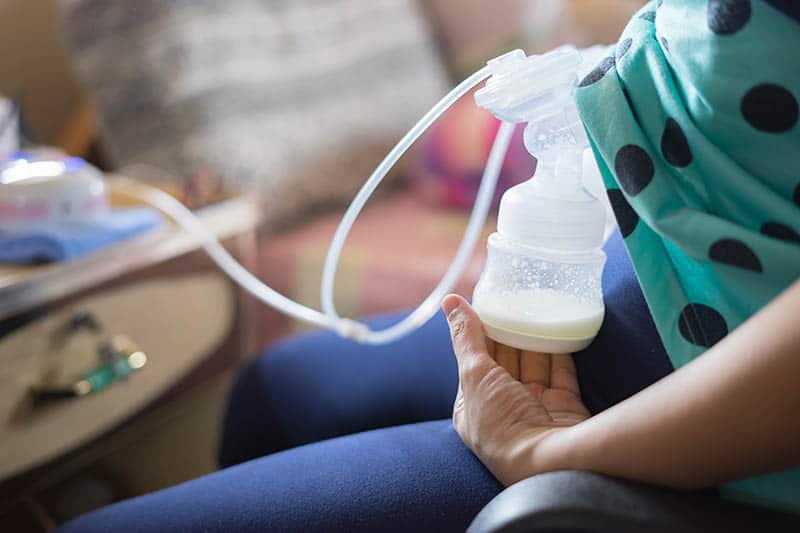
By gradually decreasing the length of your pumping sessions, you’ll be reducing your overall milk production output, making management of breast milk oversupply a lot easier overall.
This functions on the same principle as if your baby is slowly trying to detach from the breast.
The shorter the feeding lasts and the less milk is sucked out, the more your brain thinks it’s time to reduce milk production until pumping breast milk becomes a thing of the past (until the next baby comes into view, of course!)
Again though, you shouldn’t be reducing the pumping session duration too quickly, otherwise you’ll run into the same problems as going cold turkey would.
You’d be achieving the adverse effect – instead of lowering your milk supply, it will stay the same and not enough will end up being pumped out, resulting in breast engorgement and other problems.
Shaving a quarter of the time per week would be my best suggestion. That’s how I went about it after seeking help from my lactation consultant.
It’s not too quick of a cutoff, but it’s still significant enough that you’ll be able to end your pumping journey in about a month or so, give or take a few weeks.
Of course, not all sets of boobs are the same. Some women might be able to cut off more time per week when weaning from pumping and some less.
Pay attention to how your breasts feel and see that it doesn’t hurt, then increase or decrease accordingly.
4. Spreading The Remaining Sessions Further Apart
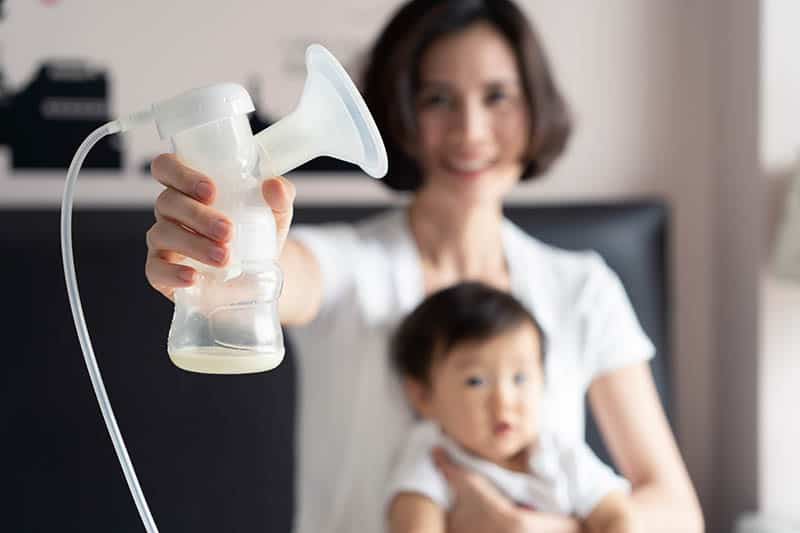
This one is mostly a supporting step rather than a standalone one. When you’re decreasing your sessions or decreasing session times, you’ll have more wiggle room.
Use it to space them further apart so your breasts can ease into the lower milk production a lot better when they see that they don’t really need to produce that much milk anymore.
This is especially helpful if you’re a mom who is doing exclusive pumping, because the moment these small gaps start popping up when you start your weaning from pumping, you’ll start feeling relief.
While all four of these methods can function as good ways on their own, it’s best to incorporate a little bit of each for the most beneficial and issue-free weaning process.
Rinse And Repeat Until You Can Stop Pumping

There’s not much else for you to do once you’ve experimented enough to see what the most effective weaning method for you is.
All that’s left for you is to repeat as necessary until done – that’s pretty much all there is to it.
Four different methods, some more efficient than others, and all of them spectacular when used in combination with one another to provide you with an easier time.
Your freezer stash will slowly diminish and will serve as some sort of progress bar for you to see how close you are from finally ditching the breast pump – trust me, it’ll feel like a sort of personal achievement.
Alternatively, you can represent your pumping sessions visually and start crossing them off as you go through week by week, eliminating one after the other until there are none left.
Remember To Be Patient And Look Out For Signs Of Inflamed Breast Tissue

If at any point you start feeling some odd pain or burning sensation in your breast area, hold on for a bit.
You may need to readjust your method as something you’re doing might be a bit too fast for your body to adjust.
These are signs that you might be suffering from mastitis or clogged milk ducts, which is what we’re specifically trying to avoid.
This isn’t a race to see who can stop pumping the fastest, especially considering you’re the only one running.
Be patient about it; it won’t get away from you.
Much like running, you need to find a pace that suits you and stick to it. Sometimes you might be able to go for a small sprint, but nothing too far that will leave you aching.
Just stick to that optimal tempo and you’ll get off the pump quickly and with hopefully zero complications.
EXTRA: Other Things That Can Help You Lower Milk Supply The Natural Way
Cabbage Leaves

Yes, cabbage leaves of all things – something that women use when having to deal with breast engorgement, mastitis, and similar issues.
I know it sounds silly since all of this alternative medicine stuff is all around us trying to fill our heads with nonsense, but there does seem to be some merit to this method.
It really did help me deal with milk oversupply when I had issues with it.
The basic process is to rinse two leaves out and then refrigerate them or cool them down in any way.
Then, make small holes for your nipples and place them over your breasts, removing them once the leaves wilt, and repeating if necessary.
Overdoing it is a potential risk as it may lead to a milk supply that ends up being too low, but it shouldn’t be that big of an issue if your nursing sessions have come to a close as well.
Hand Express Milk If Dealing With Engorgement

If you end up messing up with the weaning process and start seeing symptoms of inflamed breasts like clogged milk ducts or mastitis, then hand expressing a little milk will help you relieve it for a bit.
Make sure to not express too much milk because you’ll be sending the wrong signal to the brain and make it think it’s time to feed, only to make the inflammation worse.
The whole idea of weaning from pumping is to take it slow, as rushing it will only lead to trouble.
Use Ice Packs When Necessary
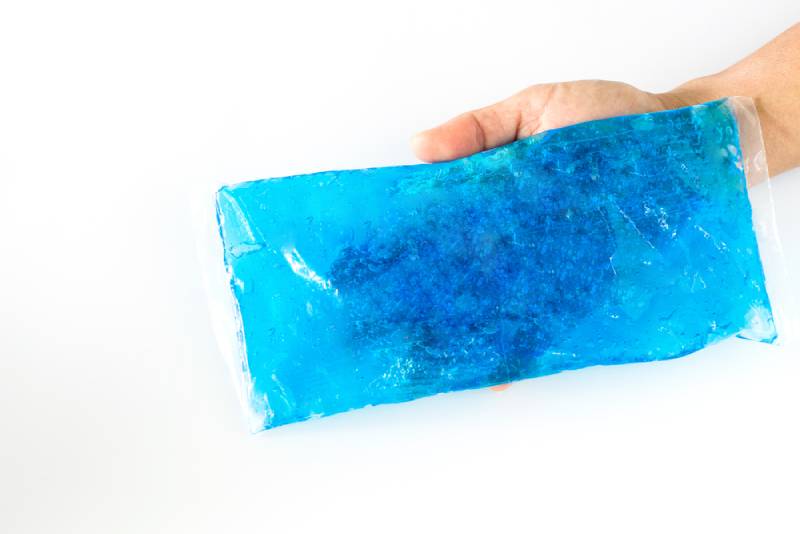
Again, breast engorgement is almost unavoidable at some point in early motherhood as it’s a lot of trial and error.
Some moms might not suffer through it whatsoever, while some might go through horrid episodes of it every now and then.
It’s all about finding the right tempo, and just because it happened to you doesn’t mean you did something horribly wrong. You just didn’t know your limits.
If it does happen, the most common solution is to grab an ice pack, wrap it in a rag or a cloth (enough so you won’t get freeze burn), and press it onto your breasts.
The chill will help reduce the swelling. Just don’t keep it on for too long, as cloth can only do so much to protect you.
Interact With Your Breasts As Little As Possible

While mostly unavoidable, you can do little things to keep this step in check. As firm and bloated as your breasts may feel, you shouldn’t go about stimulating them in any sort of way.
Not if you want to lower your milk supply to help move the weaning process along.
Whether it’s a massage, rubbing cream on them to help reduce swelling, going through the breast pumping or feeding process, or even so much as rain or the water from the showerhead hitting them – all that counts.
All these are triggers that the brain will react to and try to produce more milk, thinking it’s your little one asking for more milkies, which might lead to breast engorgement later.
Try to minimize as many forms of breast interaction as possible and you’ll start having a lot less trouble.
Still Confused? Seek Professional Help

As knowledgeable as I may be on these matters, I cannot give you precise advice since I’m not exactly seeing you face to face.
I can only give you the general stuff that is known to work, but a healthcare professional can help you properly assess the situation and guide you through an easier weaning process.
Your lactation consultant is your best friend in all things regarding your breasts and the way they produce milk. Explain exactly what you want to do and let them guide you through the necessary steps.
They know what’s best; listen to them.
You can always turn back here to help remind you of the basics while they might give you something a bit more tailored to you specifically.
In Conclusion
Weaning from pumping isn’t an overly arduous process, it just takes a bit of time to adjust to it, but following the procedure properly will help you put your breast pumping journey to a close in a much less painful way than just going cold turkey on it.
If you can stomach an abrupt stop and all of the potential inflammation issues that might follow along with it, feel free to do so, and should it happen, take some advice from the Extra section above.
It’ll be an immense help in putting an end to those health concerns quickly.
If you’re still confused about how you should go about weaning from pumping, I’d suggest seeking advice from your lactation consultant, since, as always, they have better insight into the situation – more so than any article you’ll read on the internet.
They’re professionals and they know you on a more personal level; we can only go off of general information.
With that said, I hope your weaning process goes by as smoothly and painlessly as possible, so that you can focus your attention back to your growing child who has managed to advance past breast milk!
Congrats, mamma!
Like this post? Please share or pin it for later. You can also stay in the loop and follow us on Facebook, Instagram and Pinterest.

This post contains affiliate links. Please see our full disclosure or more info.

